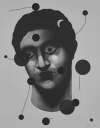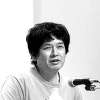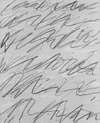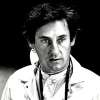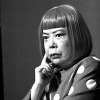Sigmar
Polke
Sigmar Polke, a leading figure of Post-War art, fused painting with photography, creating a unique commentary on the absurdity of modern life. If you’re looking for original Sigmar Polke original prints and editions for sale or would like to sell, request a complimentary valuation and browse our network’s most in-demand pieces.
Notable series
Sigmar Polke art for sale
Discover Sigmar Polke prints for sale, exclusively available through our private network of collectors. Explore signed and unsigned screenprints, lithographs, digital prints, and rare editioned proof prints by era-defining blue chip artists.
Sell Your Art
with Us
with Us
Join Our Network of Collectors. Buy, Sell and Track Demand
Biography
Sigmar Polke was an artist of immense versatility and innovation, whose eclectic body of work has significantly contributed to the landscape of Contemporary Art. Renowned for his pioneering spirit and the critical engagement with the inherent ironies of societal structures and the art world, Polke's oeuvre is celebrated for its experimental spirit and conceptual depth.
Born in 1941 in Lower Silesia, Polke's early years were shaped by the turmoil of post-war Germany. His family fled to East Germany in 1945, and later to West Germany in 1953, where Polke completed his studies at the Kunstakademie Düsseldorf. It was here that he began to exhibit early signs of his artistic interest and propensity for pushing boundaries. His education under the tutelage of influential artists such as Joseph Beuys provided a fertile ground for his burgeoning creativity.
Polke's artistic development can be understood through a series of distinct phases, each characterised by a broad exploration of various media, including painting, photography, printmaking and film. In the 1960s, Polke, along with fellow artists Gerhard Richter and Konrad Lueg, founded the movement known as Capitalist Realism, a critical response to both American Pop Art and the Socialist Realism of the Soviet Bloc. His work from this period, such as the iconic Rasterbilder series, utilised a dot matrix technique to interrogate the visual language of mass media, simultaneously utilising and subverting the imagery of popular culture.
Throughout the 1970s and 1980s, Polke experimented with non-traditional materials, incorporating substances like meteor dust, arsenic, and even snail mucus into his works. This period saw him delve into abstraction and a more in-depth engagement with the mystical and historical narratives, as evidenced in the Watchtower series, which is utilises layered images to comment on the cross-referential and emotional nature of memory.
Polke’s printmaking also plays a significant role in his oeuvre, exemplified by his 2006 lithographic series Der Kuchen Ist Alle? This series explores themes of consumerism and society through a vibrant and intricate fusion of images, patterns, and text. The title, which translates to “Is the cake all gone?”, serves as a metaphor for the insatiable appetite bred by capitalist culture. These prints reflect Polke’s satirical approach to materiality, highlighting his critical perspective on contemporary culture.
His collaborations and influences were as varied as his artistic output, drawing from sources ranging from folk art to science, which contributed to the innovative spirit of his work. Notable exhibitions throughout his career, including a retrospective at the Museum of Modern Art in New York in 1999, solidified his reputation as one of the most influential figures in the art world.
























